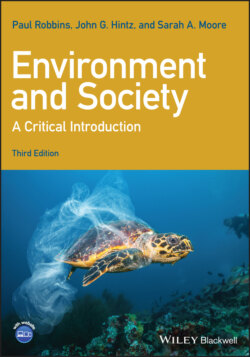Читать книгу Environment and Society - Paul Robbins - Страница 69
The Evidence and Logic of Collective Action
ОглавлениеExactly at the same time that the logic of the Prisoner’s Dilemma and the “Tragedy of the Commons” was becoming widely accepted, confusing and incongruent evidence was beginning to mount. As anthropologists, sociologists, historians, and geographers observed resource management around the world, they continued to report behaviors that in no way fit Hardin’s predictions. Specifically, they found countless examples of complex systems for management of difficult-to-enclose resources – ranging from fish, trees, and pasture to computer processing time – that relied neither upon some form of tyrannical enforcement authority nor upon the assignment of exclusive private property rights to the resources in question. Some other form of management appeared not only possible but actually predominant in natural commons around the world.
Lobster fisheries in Maine, for example, were observed to be supported and maintained less through centralized state law than through the behavior of lobster fishers themselves, who self-limited the number of boats allowed in the fishery and their distribution of traps. Village irrigation systems in southern India were shown to be carefully self-managed systems where irrigators followed careful rules concerning the opening and closing of flood gates to water their fields while keeping the array functioning for the flow of water to downstream users. Tree tenure traditions in East Africa were organized to allow the use of forest products by households who did not hold title to the land on which the trees stood, while limiting their access to sustain the harvest. Even global environmental treaties, which are technically unenforceable, often result in remarkable success, as in the case of the Montreal Protocol to address deterioration of the ozone layer (see Box 4.1 ). Across the world, countless, highly variable systems of institutions appeared to violate the iron laws of the Prisoner’s Dilemma through some form of local organization.
